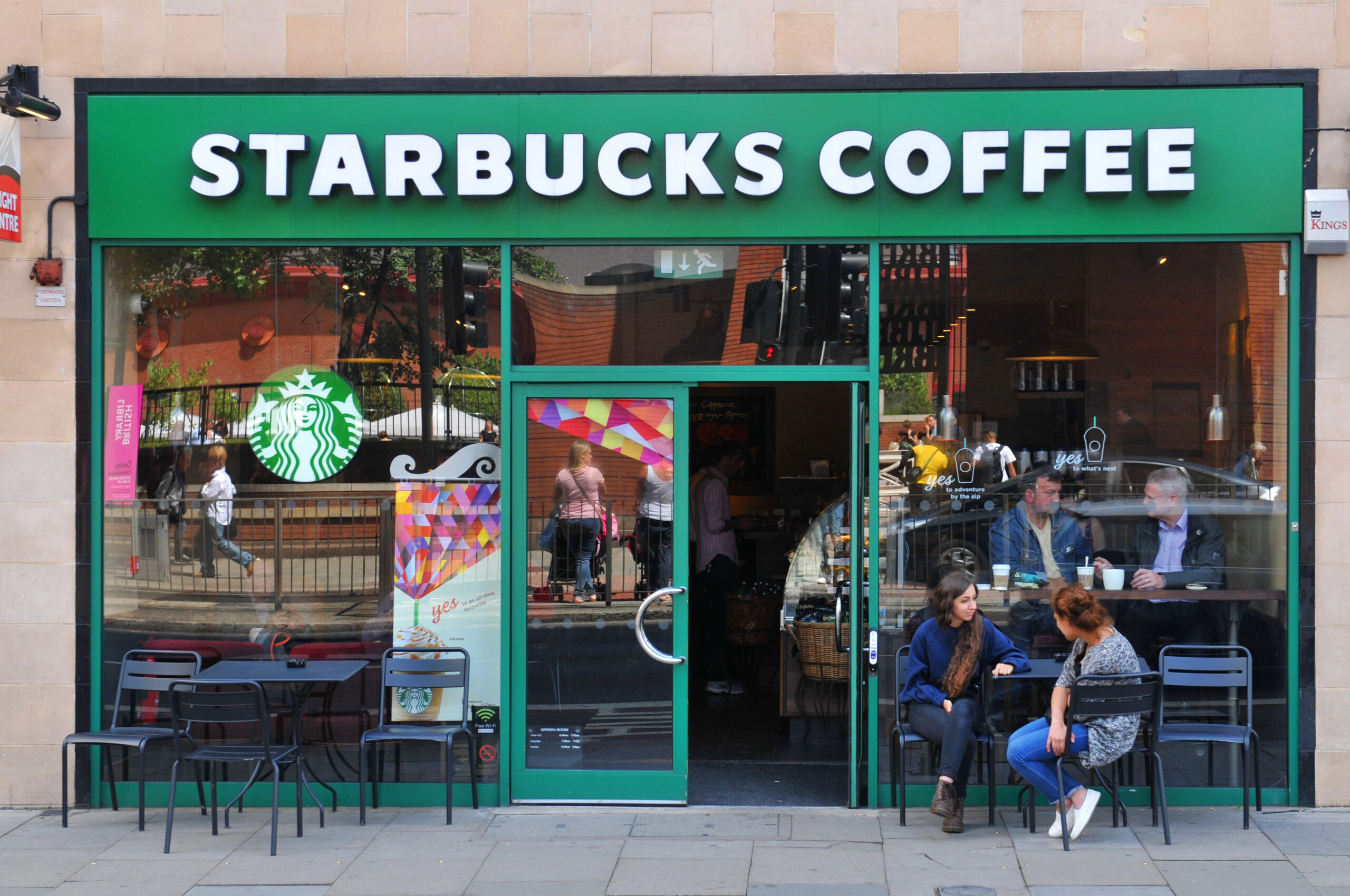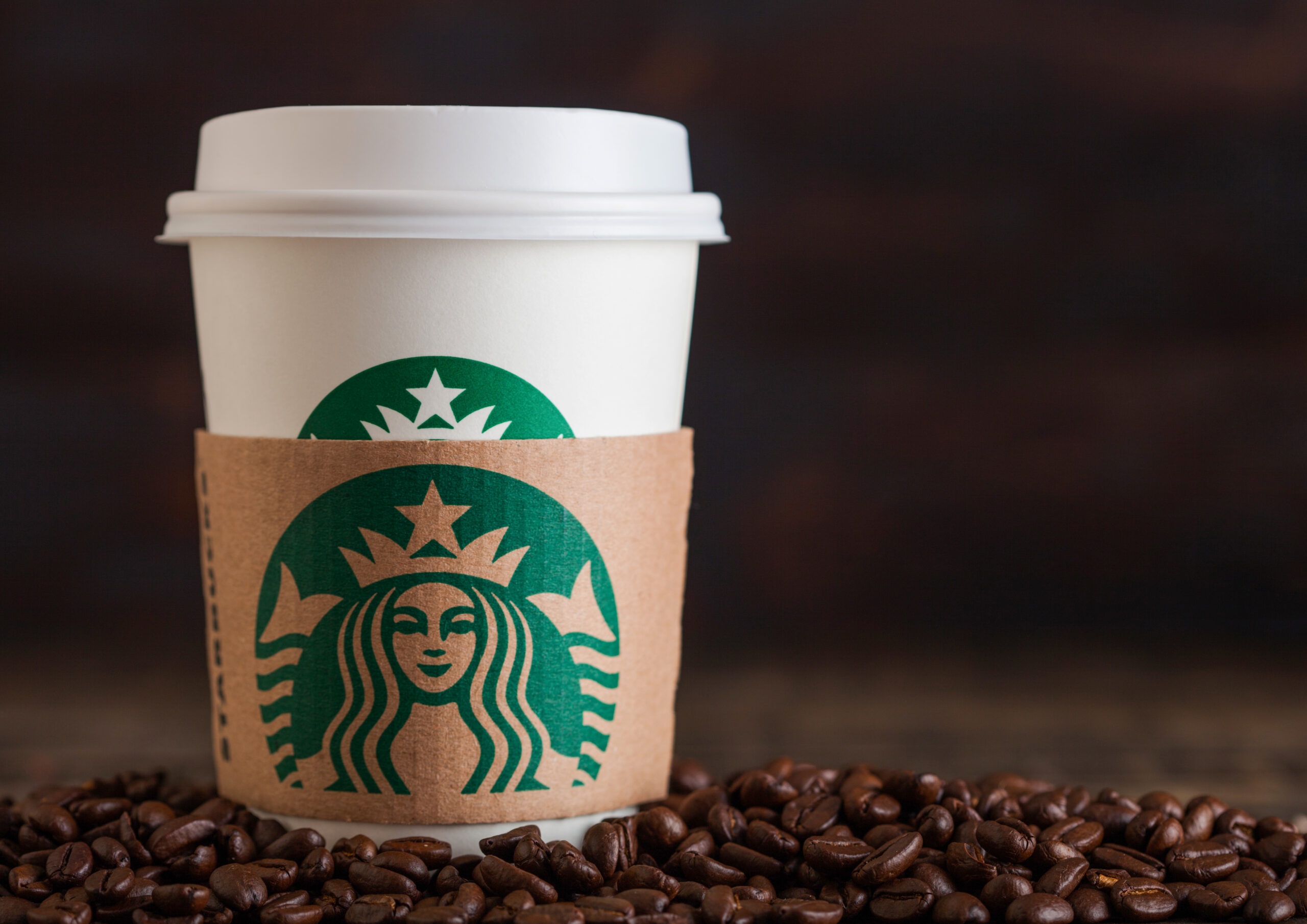On Tuesday 30th April, Starbucks announced quarterly earnings and revenue below expectations, driven by an unexpected drop in same-store sales.
Additionally, the coffee chain reduced its projections for fiscal 2024 earnings and revenue, anticipating continued underperformance of its cafes for several quarters.
The company’s shares plummeted by 12% during extended trading hours.

“In a greatly challenging environment, this quarter’s outcomes do not showcase the strength of our brand, our capabilities, or the opportunities that lie ahead,” stated CEO Laxman Narasimhan in a release. “While it fell short of our expectations, we recognize the specific challenges and opportunities directly ahead of us”, he added.
Not only that, the company experienced a 4% decline in same-store sales, with cafe traffic dropping by 6% during the quarter. Wall Street had anticipated a 1% growth in same-store sales, as per StreetAccount estimates.
Starbucks reported shrinking same-store sales and declining traffic across all regions.
Additionally, in the U.S., same-store sales declined by 3%, accompanied by a 7% drop in traffic. This marks the second consecutive quarter of struggle for the company’s home market. In the previous quarter, executives attributed sluggish sales to boycotts aimed at the company due to “misperceptions” of its stance on Israel.
Starbucks‘ international segment witnessed a 6% decrease in same-store sales, with declines in average ticket size and transactions. In China, Starbucks’ second-largest market, same-store sales plummeted by 11%, driven by an 8% drop in average ticket size.
“In this environment, many customers have become more discerning about where and how they allocate their spending,” Narasimhan said in a statement.
Furthermore, the coffee giant reported fiscal second-quarter net income attributable to the company of $772.4 million, or 68 cents per share, a decrease from $908.3 million, or 79 cents per share, compared to the same period a year earlier.

Net sales experienced a decline of nearly 2%, totalling $8.56 billion.
For fiscal 2024, Starbucks has adjusted its expectations, anticipating revenue growth in the low single digits, a decrease from 7% to 10% from the previous forecast.
Additionally, the company revised its projections for global and U.S. same-store sales growth to a range of low single digits to flat, compared to the earlier forecast of 4% to 6%. In China, same-store sales are now anticipated to decline by single digits, a shift from the prior outlook of a single-digit increase.
Starbucks has adjusted its earnings per share growth forecast to flat to low single digits for fiscal 2024. This is a notable shift from the previous forecast, which anticipated earnings climbing by 15% to 20% in the same period.
The company anticipates that sales will begin to show improvement in the fiscal fourth quarter.
In conclusion, Starbucks faces significant hurdles in the current market landscape, as evidenced by its recent performance and revised forecasts. As the company implements necessary changes and adapts to the challenges ahead, investors and stakeholders can monitor its progress and look forward to potential growth opportunities.


